Table of Contents
Introduction
Golf is a difficult sport that calls for dexterity and talent. Even the most skilled golfers, though, occasionally have trouble on the course. The Golf shank is one of the most dreaded strokes in golf. This article will look at golf shanks’ causes, treatments, and prevention measures. Understanding the basics of shanking will help you improve your game and lower your scores whether you’re a novice or a seasoned golfer.
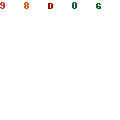
1. What is a Golf Shank?
A golf shank, sometimes referred to as a “hosel rocket” or “lateral,” is a shot that veers dramatically to the right or left (depending on the golfer’s left or right handedness). It happens when the club’s hosel rather than the clubface strikes the ball. As a result, the shot typically deviates greatly from the intended aim. Shanks can be discouraging and detrimental to a golfer’s self-esteem, resulting in higher scores and less love of the sport.
2. Causes of Golf Shanks
Poor Setup and Alignment
The ball may shank as a result of poor setup and alignment. It is more difficult to make a clean contact with the ball when your body is out of alignment if your stance is too narrow or wide. To prevent shanking and enhance ball-striking consistency, it is essential to address setup and alignment concerns.
Grip Issues
Shanks can also result from improper grip. It is challenging to hit the ball cleanly while holding the club too tightly or too loosely, which impacts your control over the clubface. The removal of shanks from your game will be facilitated by establishing a neutral grip and perfecting the location of your hands.
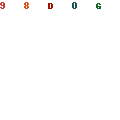
Weight Distribution and Balance
The proper distribution of weight and balance are crucial in preventing shanks. During the swing, your club may make contact with the ball’s hosel instead of the clubface if you put too much weight on your toes or heels. Consistent ball-striking requires that you learn to distribute your weight evenly and keep your balance throughout the stroke.
Swing Path and Clubface Control
The proper distribution of weight and balance are crucial in preventing shanks. During the swing, your club may make contact with the ball’s hosel instead of the clubface if you put too much weight on your toes or heels. Consistent ball-striking requires that you learn to distribute your weight evenly and keep your balance throughout the stroke.
Mental Factors
Finally, emotional issues like stress, anxiety, or overthinking might cause the ball to be shank. Golf is a mental game, and distractions or unfavorable thoughts can alter the mechanics of your swing. Shanks are less common if you learn to control your mental state, stay focused, and keep a positive outlook.

3. Remedies for Golf Shanks
Correcting Setup and Alignment
Make sure your hips, shoulders, and feet are parallel to the target line. Keep a proper distance from the ball while letting your arms hang loosely. Try out several stance widths to see which one suits you the best. Your chances of making a clean contact with the ball will increase with regular practice and proper setup and alignment.
Improving Grip Technique
For right-handed golfers, practice a neutral grip with the “V” formed by your thumb and index finger pointing in the direction of your right shoulder. Find the ideal balance for comfort and control when holding the club; avoid holding it too tightly or too loosely. Review your gripping technique frequently and make any required adjustments.
Establishing Proper Weight Distribution and Balance
Throughout the swing, keep your weight evenly distributed throughout your feet. Avoid putting too much weight on your heels or toes. Exercises that help with balance and weight distribution include swinging on one foot or with your feet close together. The risk of shanking will be reduced by developing muscle memory for optimal weight distribution.
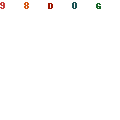
Enhancing Swing Path and Clubface Control
Work on creating a fluid and shallow swing path to keep the club flying straight. Avoid swings that are too steep or inside-out. Practice controlling the clubface at impact and aiming for a square position at the same time. To lessen the likelihood of shanks, perform swing path and clubface control workouts on a regular basis.
Managing Mental Factors
Overcoming shank tendencies requires building mental fortitude. To remain focused and at ease while you swing, practice mindfulness and visualization exercises. Create a regimen that will assist you in calming down before each shot. Talk to yourself positively and believe in your potential.
4. Prevention Strategies for Golf Shanks
Consistent Practice and Reinforcement
The key to preventing shanks is consistency. Reinforce proper setup, grip, weight distribution, swing path, and clubface control through regular practice of the fundamentals. Spend time on thoughtful practice, and stay away from short cuts. Consistent practice will help you develop muscle memory and enhance your overall ball-striking performance over time.
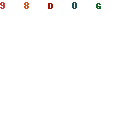
Seeking Professional Instruction
Consider working with a golf coach to pinpoint and correct particular swing flaws that cause shanking. An expert coach may offer individualized instruction, assess your swing mechanics, and recommend drills and workouts specific to your requirements. Professional instruction speeds up learning and aids in avoiding shanks.
Maintaining a Positive Mindset
Golf is a sport that has its highs and lows, so staying optimistic is crucial. Accept shanks as a given in the game and keep a positive outlook on your development. Accept the learning process and concentrate on the progress you make rather than constantly obsessing on setbacks. Your ability to overcome obstacles and keep shanks from detracting from your overall game will depend on your mindset.
5. Conclusion
Golf shanks may irritate players of all skill levels and are a frustrating stroke. However, you can drastically lower the incidence of shanks in your game by comprehending the causes, putting in place suitable cures, and employing prevention tactics. Keep in mind to practice frequently, get expert advice when necessary, and keep a positive outlook. You may overcome shanking and have a more fulfilling golfing experience with commitment and persistence.
FAQs
Q1: Can shanking the ball cause any physical injury?
A1:While shanking itself rarely results in bodily harm, the rapid deviation of the ball’s trajectory may raise the possibility of colliding with adjacent people or objects. When shanking occurs, make sure you are aware of your surroundings and use caution.
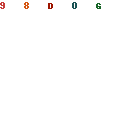
Q2: Are shanks more common in certain clubs or shots?
A2: Shanks are a regular occurrence with shorter clubs, such as wedges and short irons, although they can happen with any club and during different strokes. It is simpler to strike the ball with the hosel because to the shorter shaft length and more upright lie angle.
Q3: How long does it take to eliminate shanks from my game?
A3: Depending on the person and how committed they are to practice and growth, different people take different amounts of time to eliminate shanks. Shanks can be considerably decreased over time with targeted practice and a methodical approach to addressing the causes.
Q4: Is it normal to shank the ball occasionally even for experienced golfers?
A4: Yes, occasionally even seasoned golfers will miss the ball. Golf is a difficult sport, and even the best golfers occasionally have difficulties. Understanding the causes, dealing with them right away, and keeping a positive outlook are crucial.
Q5: Are there any drills or exercises specifically designed to prevent shanks?
A5: Indeed, there are a variety of exercises and routines that can aid in preventing shanks. Drills to improve alignment, grip pressure, weight transfer, swing plane, and clubface control are a few examples. To find the drills that are best for your unique requirements, speak with a golf expert.






